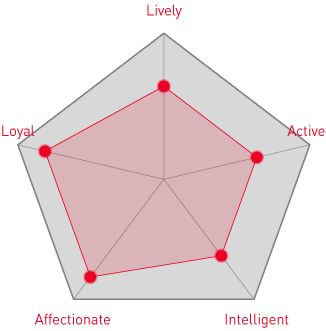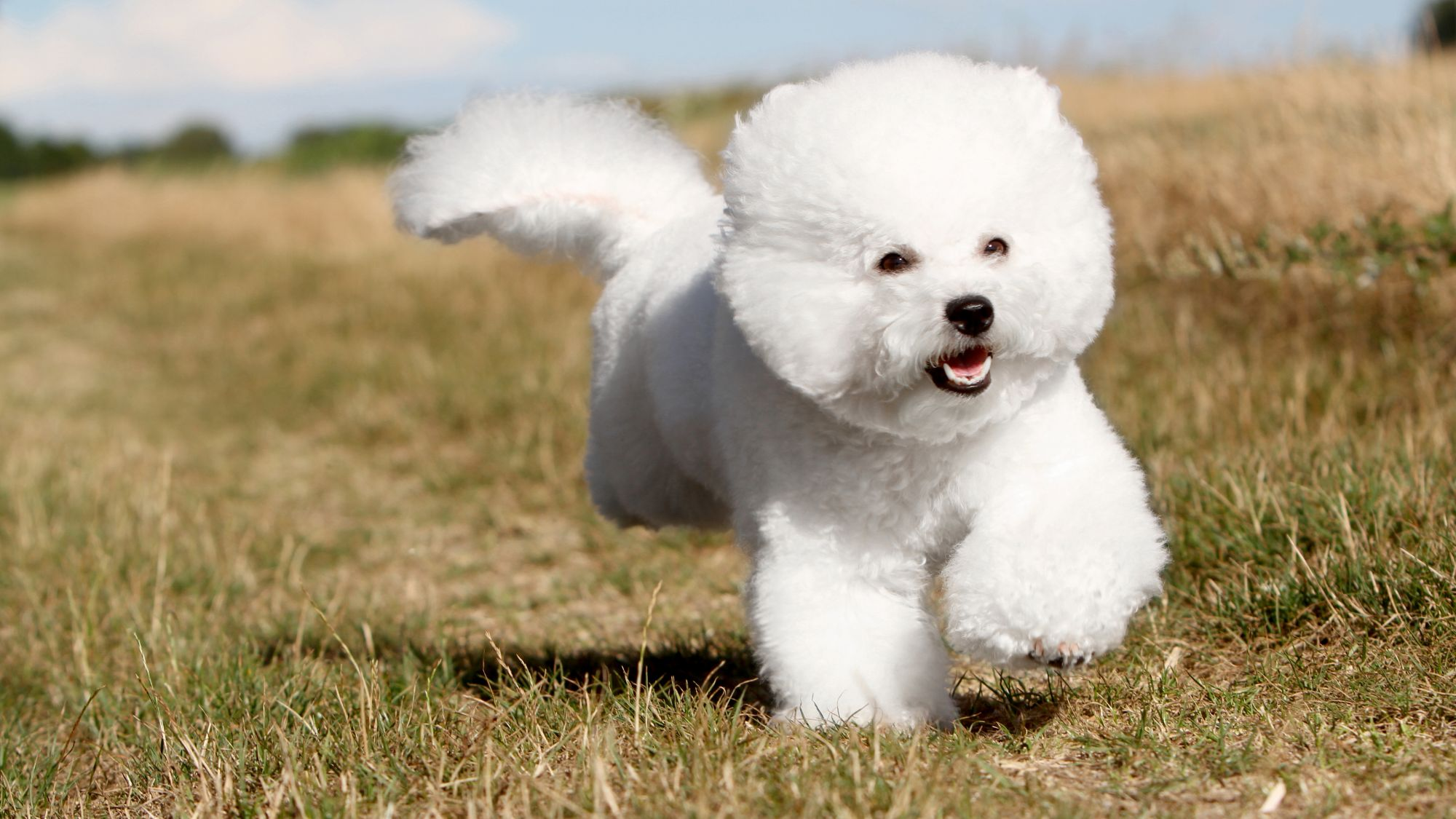
Let's talk Bichon Frisés
It’s hard to describe the Bichon Frisé without using the word ‘fluffy’. Their hair is practically cloud-like in its softness although the bouffant look is optional (they aren’t born symmetrically groomed). And while they don’t shed, Bichon Frisés definitely need daily attention paid to grooming to keep that beautiful coat from matting. Naturally affectionate and ultra-friendly, Bichon Frisés don’t always discern between people they know and people they don’t, greeting both with tail-wagging enthusiasm. Even so, the Bichon Frisé’s temperament is one of the pleasures of this playful breed.Official name: Bichon Frisé
Other names: Bichon Frise
Origins: France

| Drooling tendencies |  |
Warm weather? |  |
| Shedding level |  |
Suited to apartment living? |  |
| Energy level (high, low, medium) *: | Medium | Family pet? * |
 |
| Compatibility with other pets |  |
Can stay alone?* |  |
* We advise against leaving pets alone for long stretches. Companionship can prevent emotional distress and destructive behaviour. Speak to your veterinarian for recommendations.
Every pet is different, even within a breed; this snapshot of this breed’s specifics should be taken as an indication.
For a happy, healthy and well-behaved pet, we recommend educating and socialising your pet as well as covering their basic welfare, social and behavioural needs.
Pets should never be left unsupervised with a child.
All domestic pets are sociable and prefer company. However, they can be taught to cope with solitude from an early age. Seek the advice of your veterinarian or trainer to help you do this.


| Baby age: | Birth to 2 months |
| Puppy age: | 2 to 10 months |
| Adult age: | 10 months to 8 years |
| Mature age: | 8 to 12 years |
| Senior age: | From 12 years |

1/7
Происхождение породы
Для многих любителей собак лабрадор ретривер остается одной из самых популярных универсальных пород в мире. Родиной лабрадор ретриверов считают побережье острова Ньюфаундленд в Канаде, где рыбаки использовали похожих собак для подачи рыбы. The breed as we know it today, however, was established by the British in the early 1800’s.
Клуб лабрадор ретриверов был основан в 1916 году. Вскоре после этого был принят первый стандарт породы, преимущественно ориентированный на рабочих лабрадор ретриверов, которые обрели изначальную известность и были впервые представлены в Великобритании в конце 1800-х годов полковником Питером Хокером и графом Малмсбери.

2/7
2 facts about Bichon Frisés
1. Parlez-vous Français?
While the Bichon Frisé as we know it today has French roots, the breed’s earliest ancestors were actually Spanish and Italian, sailors and noblemen equally. That’s why some refer to the Bichon Frisé as having Mediterranean origins, thereby covering all bases.
2. Brush up on your grooming
Supremely easy-going as a breed, the same cannot be said for the Bichon Frisé’s grooming needs. That soft, fluffy coat must be brushed daily where possible to prevent matting. And, as with many small breeds, they can be prone to teeth and gum issues, so grab a toothbrush while you are at it! The good news: Neither brushing routine takes long.
History of the breed
The Bichon Frisé’s history is long and as interesting as the breed itself. Typically and rightfully associated with France, the breed is believed to have originally descended from Spanish sailing dogs in the Canary Islands, keeping sailors company during long voyages. The Tenerife Bichon, as they were known, is thought to be one of the Bichon Frisé’s forebears.
By the 13th century, they were housed in royal courts all over Spain, Italy and France. It was the latter who bred the lapdog we know and love today, probably around the time of the French Renaissance in the 16th century. Beloved by nobility, the Bichon Frisé had a grand old time of it. However, when the French Revolution began, their royal owners were sent to the guillotines, leaving Bichon Frisés to fend for themselves. Saved by the reign of Napoleon III, the breed was in the royal court once again, adored, pampered and dressed to the nines, the inspiration behind a new French verb: bichonner, meaning “to pamper.”
Throughout their history, fanciers would swoop in and keep the Bichon Frisé going as their fame ebbed and flowed and ebbed again. They didn’t appear in America until 1955. The Bichon Frise Club of America was formed in 1964 – note the Americanisation of the name – with the breed finally recognised by the American Kennel Club in 1971.

4/7
From head to tail
Physical characteristics of Bichon Frisés
1. Уши
Не тяжелые, висячие, прилегающие к голове, посаженные далеко сзади
2. Шерсть
Короткая густая шерсть с водоотталкивающим подшерстком.
3. Шерсть
Окрас шерсти от черного до шоколадного или желтого, от светло-кремового до лисье-рыжего. Иногда у собак с черным окрасом встречается небольшое белое пятно на груди.
4. Хвост
Высоко посаженный длинный хвост постоянно виляет, а время от времени раскачивается весь корпус.
5. Ноги и спина
Пропорционально сложенные, с оптимальным соотношением длины ног и спины.

5/7
Things to look out for
From specific breed traits to a general health overview, here are some interesting facts about your Bichon Frisé

6/7
Caring for your Bichon Frisé
Grooming, training and exercise tips
The Bichon Frisés fluffy white coat does require near-daily TLC. Gentle brushing is recommended to avoid a build-up of tangles, though skipping a day here and there is doable. They shed very little but those hairs can get caught up in their undercoat and need to be brushed out as well. Nails should be trimmed and ears cleaned regularly. Because the Bichon Frisé can be prone to dental disease, teeth should be brushed often, daily if you can get away with it. While compact, the breed needs their exercise to work off that small-dog energy. They can run surprisingly fast, so a closed-in area is always a good idea. And daily play sessions with you will keep their mind in great shape. Bichon Frisés can be quick learners. But their stubborn streak can mean slow housetraining. Patience and positive reinforcement are key to smooth training progress for Bichon Frisés. As is early socialisation!
7/7
All about Bichon Frisés
While we can’t speak for the entire breed, Bichon Frisés are known to be affectionate and devoted to their human owners. While they love to play – ideally with you – your lap works as well as any pillow when nap time comes around.
Most people ask this thinking that, because the breed doesn’t shed, Bichon Frisés are hypoallergenic. The truth is that no dog is 100% allergen-free. Having said that, the Bichon Frisé breed regularly makes lists as one of the best choices for allergy sufferers as they don't really shed.
Питание, учитывающее индивидуальные потребности лабрадор ретривера
Read more on this topic

How your dog's nutrition needs change with age

How to adopt a dog

Things to consider before getting a dog
Sources
1 - Veterinary Centers of America https://vcahospitals.com/
2 - Royal Canin Dog Encyclopaedia. Ed 2010 and 2020
3 - Banfield Pet Hospital https://www.banfield.com/
4 - Royal Canin BHN Product Book
5 - American Kennel Club https://www.akc.org/
